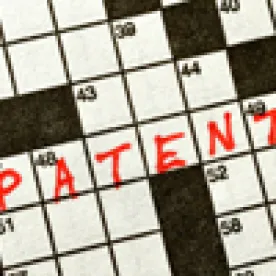Takeaway: A party seeking additional discovery should already be in possession of a threshold amount of evidence or reasoning tending to show beyond speculation that something useful – not merely relevant or admissible, but favorable in substantive value to a contention of the party moving for discovery – will be found.
In its Order, the Board denied Patent Owner’s request for authorization to file a motion for additional discovery. Patent Owner had wanted additional discovery in order to ascertain further details as to any relationship between Petitioner and a third party referred to as “Royal Cup.”
Patent Owner asserted that a relationship existed between Petitioner and Royal Cup. Patent Owner based this belief on both a letter from Petitioner and an email in which Royal Cup was mentioned; and on Petitioner obtaining a license rather than Royal Cup. In connection with this, Patent Owner sought additional discovery in an attempt to prove that each of IPR2014-01257 and IPR2014-01260 was barred under 35 U.S.C. § 315(b) because “[a]n inter partes review may not be instituted if the petition requesting the proceeding is filed more than 1 year after the date on which the petitioner, real party in interest, or privy of the petitioner is served with a complaint alleging infringement of the patent.” According to Patent Owner, an earlier district court case asserting patent infringement was filed in the 2008-2009 timeframe, and Royal Cup was “either a real party in interest, a privy of Petitioner, or both.”
Petitioner responded to these positions with a number of its own. In particular, Petitioner asserted that Royal Cup was not involved in the district court case cited by Patent Owner; that such was dismissed without prejudice; that Petitioner had never seen the email that Patent Owner had wanted to rely on; and that Royal Cup was never a client of attorneys participating in the district court case identified by Patent Owner.
Patent Owner argued back that Royal Cup was in fact involved in the cited case, and that a dismissal without prejudice could still trigger a time bar under 35 U.S.C. § 315(b). Nonetheless, at oral hearing Patent Owner was not able to cite any Board decision in which dismissal without prejudice had resulted in a time bar (in the absence of the dismissed action being joined or consolidated with a second lawsuit).
The Board found that Patent Owner had not shown beyond mere speculation or a mere possibility that its request for additional discovery would yield useful information. Moreover, the Board concluded that Patent Owner had not demonstrated that the statutory bar of § 315(b) was applicable.
Hamilton Beach Brands, Inc. v. Courtesy Products, LLC, IPR2014-01257, IPR2014-01260
Paper 8: Order on Conduct of the Proceeding
Dated: October 15, 2014
Patents: 7,311,037 (IPR2014-01257), 7,258,884 (IPR2014-01260)
Before: Grace Karaffa Obermann, Hyun J. Jung, and Christopher M. Kaiser Written by: Jung



 />i
/>i

